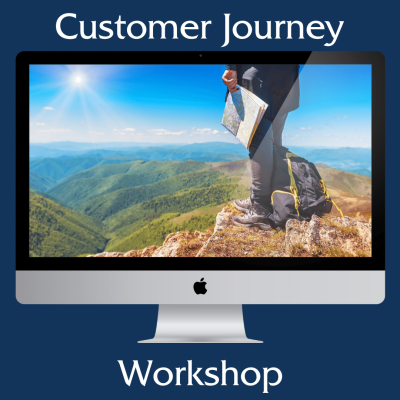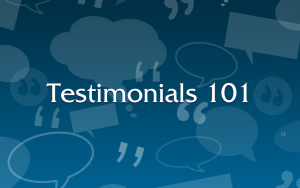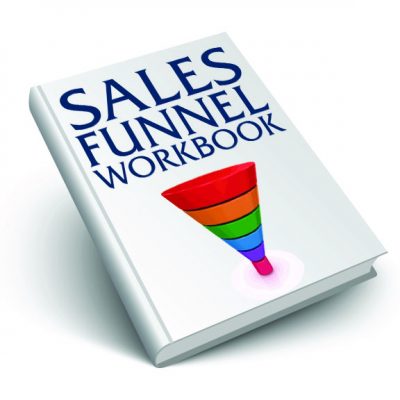Why does a customer buy from you? If you can discover this golden reason, the journey from Stranger to Customer will be much easier to follow. In this article, I’ll share with you 4 ways you can research your ideal customer, to improve your ability to sell to them. First, let me ask you a question:
What do you know about your customer?
- What’s bothering them?
- How do they make decisions?
- Where do they go for help?
- What makes them decide to buy?
If you know the answers to these questions, you can guide people into doing business with you. If you don’t know…you’re guessing.
Here’s how you can cut the guesswork:
- Competition research
- Go to their forums
- Make Facebook Audiences to build your list
- Survey your customers
Are you selling, or are you marketing?
There is a difference between sales and marketing. Sales is when you convince one person in front of you to buy something from you, right now. Marketing is when you convince groups of people to buy from you, anytime.
The lines can blur between sales and marketing, which causes confusion about what you actually…do. Marketing often adds urgency, with a limited time offer, and makes it more of a sale. Making a sale, research tells us, can take 7 or more touches before the close, so it can seem to take the same amount of time as marketing. But they work in two distinctly different ways:
Sales is one-to-one, and Marketing is one-to-many.
The best marketers are good salespeople, and good salespeople are also good marketers. Find the best marketers and salespeople in your field, and you can discover what’s working, by doing what they do.
Next time, I’ll help you do some research one-to-one. Today, we’re going to research one-to-many.
Competition Research
Henry Ford had a tremendously difficult job to do. He introduced the first mass-produced automobile to the American market. “If I had asked people what they wanted,” he said, “they would have said faster horses.”
Creating a brand-new market is daring, perilous, and complicated. Don’t build a new market from scratch, unless you have successfully entered a saturated market a few times. For most entrepreneurs, you want competition in your field.
Competitors help you to identify trends, generate ideas, and harvest customer research. In most cases, you should be able to find someone who is already doing what you do, and doing it well.
If you are not pioneering a new market, and you can find 3-5 rock stars in your industry, pay attention to what they are doing. Follow them on social media. Subscribe to their newsletters. Read their content.
Take notes.
The most effective strategies I’ve implemented in my digital marketing agency are adapted from other experts. I pay close attention to people who are better than me (like her and like her and like him and like her), because they are investing time and money and resources into researching what works.
If these people do something clever, the result of six months of customer research, I adapt their tactics for my own business. The best part is, I don’t have to spend six months figuring it out.
Big Caveat: Don’t just cut and paste from your competition. It’s dishonorable, illegal, and lazy.
If you learn the difference between repurposing work and copying work, you gain a big advantage. You can model the successful systems of your predecessors – but be careful not to cut too many corners. Do the work.
As Kaleigh Moore says on the Shopify blog, “Keeping an eye on your competitors helps you anticipate shifts in the market, spot new trends and successful tactics, and stay on the cutting edge of what’s working within your niche.” They even have a competitive analysis template here.
Once you know what your competition is doing, go to your customers.
Go to their forums
Reddit and Quora are treasure troves of newbie information. These forums don’t have a lot of spammy sales pitches, because the forum architecture naturally discourages them (thanks to upvotes and downvotes). This raises authentic content to the top of the feed, making it more likely that people will read posts relating to the topic at hand.
What does this means for you, doing your customer research? You can go into one of these forums, and search around on keywords related to your topic. What you will find are a bunch of newbies, all asking basic questions that you are uniquely qualified to answer.
This is valuable for two reasons:
- First, you can answer these questions and make some connections.
- Second (and more importantly), you learn how your prospects phrase their problems.
You can amplify the effectiveness of your marketing copy by using the phrases your customer uses to talk about their problems.
As James Mulvey says on the Hootsuite blog, “Reddit can help you observe what people really think about your industry and products, reveal what frustrates customers, and help you create marketing campaigns and content that kill those pains.”
The comment threads on forum posts can be a goldmine of information for you. You can eavesdrop on people who are trying to solve the problems that you can solve, all laid out in a threaded conversation, on a free website.
When you read through these conversations you will see how they interact with their problem. They will talk about the types of solutions they try, and where they encounter obstacles. You can read the solutions that other people offer, and see how they react. You can make note of what works for them, and what makes them lose interest.
Forum research opens your customers’ minds up like a book. This gives you a deep understanding of how they are currently searching for answers.
Make Facebook Audiences to Build Your List
Facebook allows anyone with a minor amount of technical aptitude to create a ‘Lookalike Audience.’ Use their sophisticated demographic and behavioural data algorithms. You don’t have to be a social engineer, all you need is a list of your current customers.
Do you have a spreadsheet of customers? Does it have enough contact information (name, email address, zip code, and so on) that Facebook can identify their user profiles? If so, then you can enter one of the most sophisticated marketing research games in the world.
All you need to do is create a Facebook ad campaign. Upload your .csv of customer data, and Facebook can create a Lookalike Audience. This is a group of people who have similar interests, similar activity, and similar data collected about themselves.
Using this Lookalike Audience is limited to the Facebook platform – you can’t export these lookalikes and start cold calling them. But you can advertise to them.
As AJ Agrawal says on the Forbes blog, “I highly suggest running a series of low-budget campaigns to see which ads and messages work best. Only increase the budget once you find one with a low acquisition cost.”
What messages make these kinds of people respond? Learning from your Lookalike Audience helps you hone your Ideal customer avatar template.
If you already have a working Sales Funnel, then you can advertise a Lead Magnet to these folks, and start filling your pipeline. If not, you can still use a Lookalike Audience for customer research, through surveys.
By asking similar people a series of survey questions, you gain valuable marketing intelligence. You can use this to sell to them in the future.
Survey Your Customers
Ryan Levesque is a master of customer research. He has worked with a Deep Dive Survey for years, and his book “Ask” is a wealth of information. He describes how (and why) asking good questions on surveys will lead you to copy that makes high-converting headlines.
Whenever he is entering a new market, Ryan will offer an incentive for people to take a detailed survey. The first question, all by itself – before he asks for their name, or email address, or any contact info – he asks, “What’s the #1 challenge you’re dealing with in relation to _____?”
He puts this question first because – it’s the most important question. If the user leaves the survey before completing all the questions, at the very least, he gets the answer here.
The responses to these questions are framed in the customers’ language, using the terms they use, and the way they think about their problem.
These specific phrases can become marketing copy, so when similar Customer Avatars see a headline with that specific phrase, they think, “This was made for me! I’ve got to get this.”
Remember, the ultimate goal of any piece of marketing is to make someone say: “Shut up and take my money!” If you can create that reaction, your marketing is a success.
Ryan uses many sophisticated techniques to gather customer intelligence. If you are planning to do a survey campaign, I highly recommend reading his book, Ask.
Setting up complicated surveys does take a lot of work. While it can reward you with qualitative data, the technical complexity to gather it might not be worth it.
That’s why many businesses prefer the old-fashioned, tried-and-true method. Gather customer research by interviewing customers one-on-one. I’ll talk about that in an upcoming article – subscribe to my newsletter to get notified when it’s ready.

About The Author
Caelan Huntress is the father of 3 kids, and in his spare time serves as creative director of Stellar Platforms. He is also a writer, digital marketer, multimedia producer, and a retired superhero. He blogs about his adventures on https://caelanhuntress.com.



 I am an American expat living in New Zealand, and I have spent ten years running an online business while traveling the world with my young family. I'm a website designer, copywriter, and sales strategist who specializes in creating online courses and sales funnels for bestselling authors, business coaches, and professional public speakers.
I am an American expat living in New Zealand, and I have spent ten years running an online business while traveling the world with my young family. I'm a website designer, copywriter, and sales strategist who specializes in creating online courses and sales funnels for bestselling authors, business coaches, and professional public speakers. 
